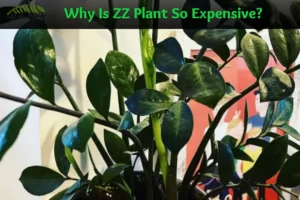Have you ever heard of a plant that can chill with you all night and give you some sweet, sweet O2? And you think the ZZ plant is that plant? Well…
So, let’s dive into the details and see if this little green buddy really releases oxygen at night or if it’s just a myth!
Do Plants Release Oxygen at Night?
The quick answer is “sort of.” During the day, plants use sunlight to make food (in a process called photosynthesis) and release oxygen as a byproduct.
But at night, the process kind of switches and plants actually consume oxygen and release carbon dioxide. So technically, plants aren’t releasing oxygen at night, but they’re not taking up as much oxygen as they are during the day.
So, Does the ZZ Plant Release Oxygen at Night?
Here’s where things get a little tricky. As I mentioned earlier, plants typically consume more oxygen than they release at night.
But some people claim that the ZZ plant is an exception to this rule and that it actually releases oxygen at night. However, there’s no solid evidence to support this claim and it’s likely just a myth.
Why Do People Think the ZZ Plant Releases Oxygen at Night?
I think the reason people believe this myth is because the ZZ plant is known for being a low-light loving plant. It can survive in conditions with very little sunlight, which makes it a popular choice for offices and homes.
And because it’s often placed in rooms where people spend a lot of time at night, it’s easy to see how the idea of the ZZ plant releasing oxygen at night might have started.
Photosynthesis: The Daytime Gig
We all know that plants take in carbon dioxide and release oxygen during the day through a process called photosynthesis. But did you know that this process also occurs at night? Confused? Let me explain.
During the day, plants use the energy from the sun to convert carbon dioxide and water into glucose (sugar) and oxygen. This process takes place in the chloroplasts of the plant’s leaves.
And as a byproduct, the plant releases oxygen into the air. This is why having plants in your home or office is a great way to freshen up the air.
Respiration: The Night Shift
But what happens at night, when the sun is down and the plant can’t photosynthesize? This is where respiration comes in. Just like humans, plants also breathe and need to take in oxygen to survive.
During respiration, the plant takes in oxygen and releases carbon dioxide, just like how we inhale oxygen and exhale carbon dioxide.
The Big Reveal: Plants Release Oxygen at Night
Surprise! Even though plants are taking in oxygen at night, they are still releasing more oxygen than they are taking in. So, if you have plants in your room, you can sleep easy knowing that they are hard at work, making the air fresh and breathable.
Read: Can You Eat ZZ Plant?
The Benefits of Night-time Oxygen Release
Having plants in your room not only freshens up the air, but it also has several health benefits. Studies have shown that having plants in your room can improve air quality, increase humidity levels, and reduce stress and anxiety.
So, Which Plants Release the Most Oxygen at Night?
If you’re looking to up your oxygen game, here are some of the best plants for releasing oxygen at night:
- Snake Plant
- Peace Lily
- Areca Palm
- Aloe Vera
- Spider Plant
Read: Can ZZ Plant Recover From Overwatering?
Wrapping Up!
Yeah so ZZ plant is a fantastic addition to any home or office, but the idea that it releases oxygen at night is just a myth.
Nonetheless, that doesn’t mean it’s not worth having around! It’s still a great choice for a low-light loving plant that’s easy to care for. If you’re looking for some extra O2 or just some green in your life, the ZZ plant is a solid choice!
Next time you’re lying in bed and feeling grateful for the fresh air, think of your green friends who are making it all possible. Sweet dreams!
Also read: Do ZZ Plants Need a Deep Pot?




